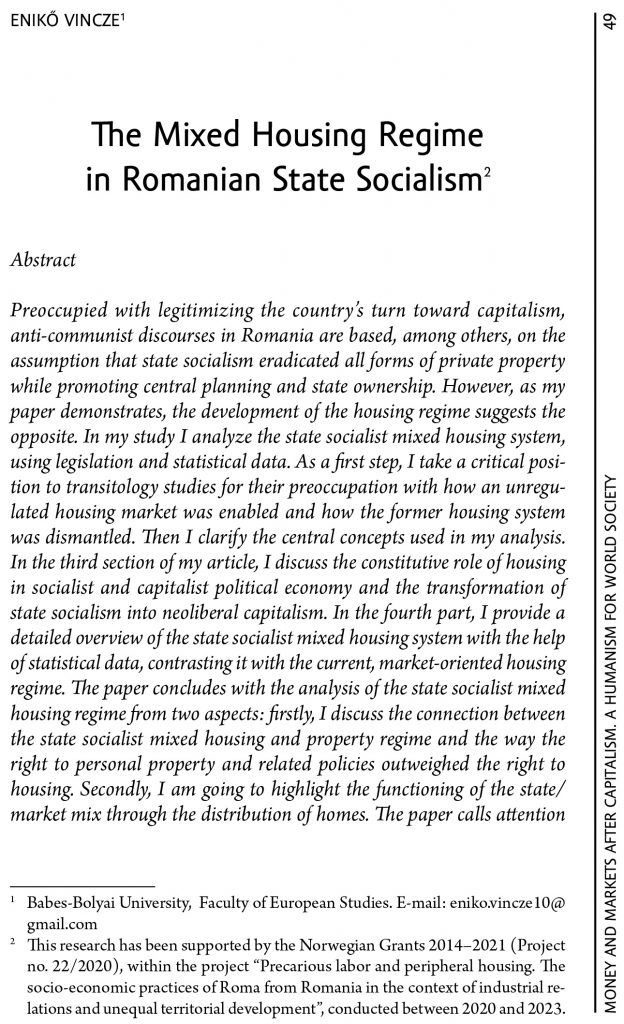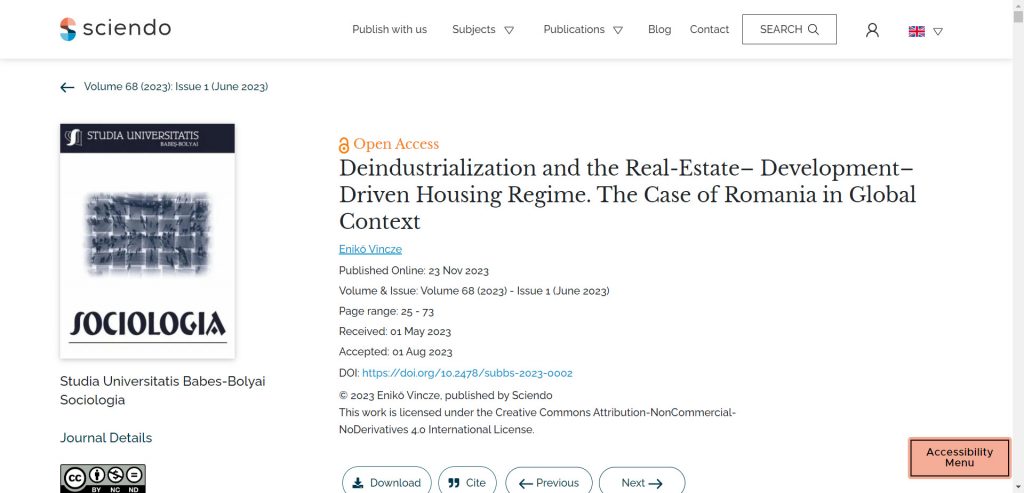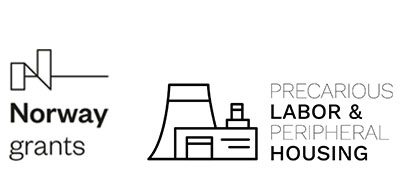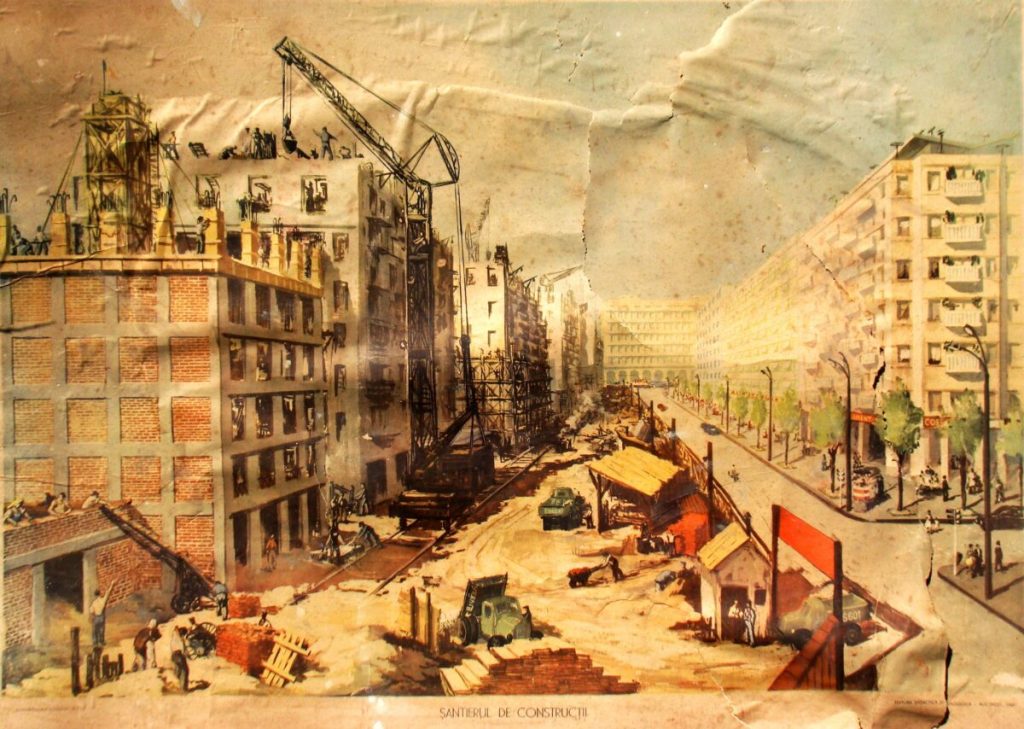The Mixed Housing Regime in Romanian State Socialism
by Vincze Enikő
Abstract
Preoccupied with legitimizing the country’s turn toward capitalism, anti-communist discourses in Romania are based, among others, on the assumption that state socialism eradicated all forms of private property while promoting central planning and state ownership. However, as my paper demonstrates, the development of the housing regime suggests the opposite. In my study I analyze the state socialist mixed housing system, using legislation and statistical data. As a first step, I take a critical position to transitology studies for their preoccupation with how an unregulated housing market was enabled and how the former housing system was dismantled. Then I clarify the central concepts used in my analysis.
In the third section of my article, I discuss the constitutive role of housing in socialist and capitalist political economy and the transformation of state socialism into neoliberal capitalism. In the fourth part, I provide a detailed overview of the state socialist mixed housing system with the help of statistical data, contrasting it with the current, market-oriented housing regime. The paper concludes with the analysis of the state socialist mixed housing regime from two aspects: firstly, I discuss the connection between the state socialist mixed housing and property regime and the way the right to personal property and related policies outweighed the right to housing. Secondly, I am going to highlight the functioning of the state/market mix through the distribution of homes. The paper calls attention to the possibilities of a housing regime that may offer an alternative to the mechanisms of contemporary capitalism. By highlighting the pitfalls of the state socialist housing system, this analysis and its conclusions offer a few reference points that such an endeavor can use.

A Dangerous Neighborhood: Hatvan and the Roma People in Baia Mare, 1950–1989
by Manuel Mireanu
In 2011, the mayor of Baia Mare caused a national outcry when he initiated the building of a wall to enclose the social housing units inhabited by Roma people. One year prior, non-Roma residents in the Horea Street area had protested against “acts of aggression and robbery committed by Roma neighbors.”
The main pretext for the wall was security. The authorities intervened with discriminatory and exclusionary measures following complaints from citizens that the area had become dangerous. The Roma people in the neighborhood were presented as a threat to the security of the locals.
This logic is not new. The Roma in Romania are frequently perceived and portrayed as being inherently criminal and dangerous – in addition to other traits that cause the majority to discriminate against them. Romanian racism against Roma is based directly on this perspective, that they cause a threat to public order.
Many Romanians, including Baia Mare citizens, declare that they would not accept having Roma people as neighbors. The media predominantly report news about crimes committed by Roma, making sure to mention the ethnicity of the suspects. Journalists, politicians, and opinion-makers, people with enormous social capital and influence, make frequent racist claims about “Roma criminality.” Over time, these racist acts lead to the rise in popularity of neo-Nazi groups, whose main message is that they “protect society” from internal dangers, among which the Roma population is “at the forefront.”
The Mayor of Baia Mare follows in the footsteps of many Romanian politicians who deported, segregated, imprisoned, evicted, and harassed Roma in the name of security, order, and civilization. Their right arm – the forces of law and order: the police, gendarmes, and sometimes the army –were the main instruments of these repressive policies. The police act disproportionately towards the Roma. They stop, search, arrest, interrogate, raid, carry out forced evictions, and physically abuse Roma people at a much higher rate than other social groups.
There is no reason why Baia Mare would be an exception to these practices. A city with a Roma population concentrated in the most precarious areas, where people often illegally occupy buildings or live in makeshift housing, Baia Mare is following the by now classic trajectory of neo-liberal cities. Slums are declared dangerous, non-white people are scapegoated, repressive measures are taken against them, the area is “cleaned up” and returned to the city and to real estate investors. However, Baia Mare is perhaps the only large town in Romania where repression has taken the form of a wall. However symbolic it may be, the presence of the wall a few steps from the center of a city with European ambitions shows a profound contempt for human rights.
These processes of exclusion and violence towards Roma people can be grasped, contextualized, and understood through a review of historical processes that are connected to housing crises, city planning, and population control mechanisms. These processes are deeply rooted in the past – yet for methodological reasons that have to do with research design, my analysis only stretches as far back as the 1950s.
The following text is a stripped-down history of one precarious area inhabited by Roma people in Baia Mare, namely the Hatvan/Vasile Alecsandri neighborhood. I look at how the local authorities regularized and managed its territory, and how these processes were intertwined with the repression and criminalization of Roma people. I focus roughly on the period between 1950 and 1989. My main methodology is the analysis of archival data that I gathered between September 2021 and December 2022, while working for the project Precarious Labor and Peripheral Housing.[1]
See here the entire article
Deindustrialization and the Real-Estate– Development–Driven Housing Regime. The Case of Romania in Global Contexthe Mixed Housing Regime in Romanian State Socialism
by Vincze Enikő
The article examines how deindustrialization as economic restructuring and housing regime changes evolved interconnectedly in Romania during the Great Transformation from state socialism to neoliberal capitalism. It also explores how they acted as conditions for the emergence of a real-estate-development-driven housing regime (REDD-HR) alongside other factors. The analysis is from the perspective of the geographical political economy on the variegated pathways of these phenomena across borders and secondary statistical data collected by two research projects conducted in Romania Precarious labor and peripheral housing, and REDURB. In the Eastern semiperiphery of global capitalism or a country of the Global Easts with a socialist legacy, after 1990, the state restructured the economy by privatizing industry and public housing. During state socialism, the housing regimes supported industrialization-based urbanization, whereas deindustrialization-cum-privatization in emerging capitalism facilitated the appearance of real estate development. On the one hand, the article enriches studies on deindustrialization by highlighting the role of housing in the transformation of industrial relations; on the other hand, it revisits housing studies by analyzing deindustrialization as a process impacting the changing housing regime. Altogether,deindustrialization-cum-privatization and the changing housing sector are analyzed as prerequisites of the REDD-HR.
See here the entire article


